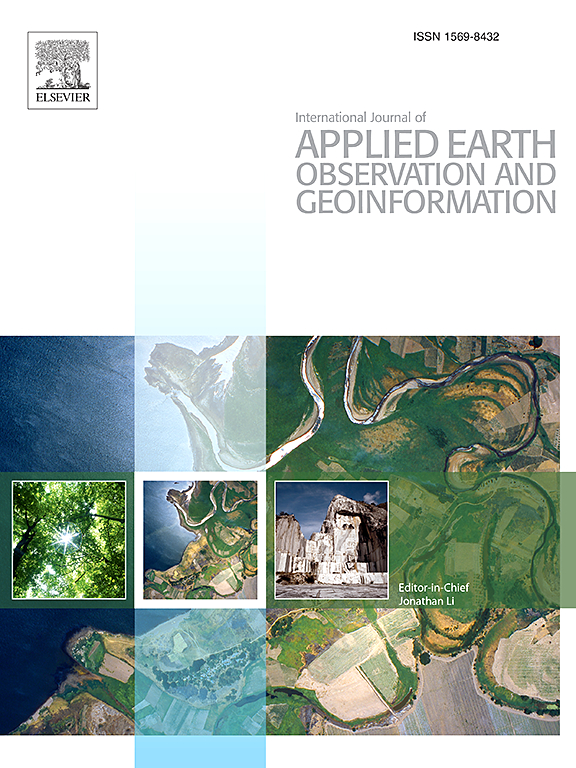Coupling ICESat-2 and Sentinel-2 data for inversion of mangrove tidal flat to predict future distribution pattern of mangroves
IF 7.6
Q1 REMOTE SENSING
International journal of applied earth observation and geoinformation : ITC journal
Pub Date : 2025-02-01
DOI:10.1016/j.jag.2025.104398
引用次数: 0
Abstract
Tidal flats represent one of the Earth’s most critical ecosystems characterized by substantial ecological value, but these areas are also among the most fragile ecosystems. A detailed topography survey of tidal flat is essential for exploring how tidal flat ecosystems respond to environmental changes and for predicting morphological shifts, thereby impacting the protection and restoration of mangrove ecosystems. However, there is still a dearth of data available for mangrove tidal flat topography, as the majority of measurements primarily rely on traditional cartographic methods or small-scale surveys. Therefore, we aim to rely entirely on Earth observation satellite platforms, combining satellite-based Light Detection and Ranging (LiDAR) and optical remote sensing to monitor extensive mangrove tidal flat topography. This methodology was rigorously applied and validated on China’s largest and most representative mangrove tidal flats, revealing a Root Mean Square Error (RMSE) not exceeding 7.5 cm and an R-squared value surpassing 0.89 when compared to airborne LiDAR data. We use the inundation frequency derived from the long-term Sentinel-2 image sequences and elevation data extracted from the Ice, Cloud, and Land Elevation Satellite-2 (ICESat-2) to establish a specific relationship between inundation frequency and ground elevation using both classical and generalized regression models, a mangrove tidal flat topography covering 76.9 km2 was generated. Our findings delineate suitable distribution areas for mangroves in the Maowei Sea, covering an expansive 18.2 km2.

求助全文
约1分钟内获得全文
求助全文
来源期刊

International journal of applied earth observation and geoinformation : ITC journal
Global and Planetary Change, Management, Monitoring, Policy and Law, Earth-Surface Processes, Computers in Earth Sciences
CiteScore
12.00
自引率
0.00%
发文量
0
审稿时长
77 days
期刊介绍:
The International Journal of Applied Earth Observation and Geoinformation publishes original papers that utilize earth observation data for natural resource and environmental inventory and management. These data primarily originate from remote sensing platforms, including satellites and aircraft, supplemented by surface and subsurface measurements. Addressing natural resources such as forests, agricultural land, soils, and water, as well as environmental concerns like biodiversity, land degradation, and hazards, the journal explores conceptual and data-driven approaches. It covers geoinformation themes like capturing, databasing, visualization, interpretation, data quality, and spatial uncertainty.
 求助内容:
求助内容: 应助结果提醒方式:
应助结果提醒方式:


